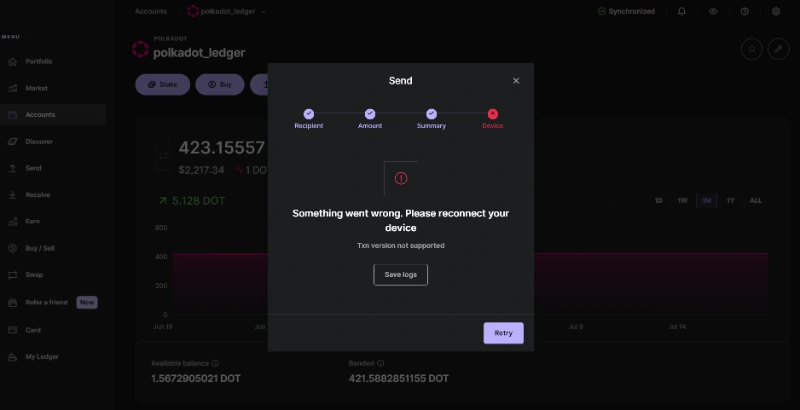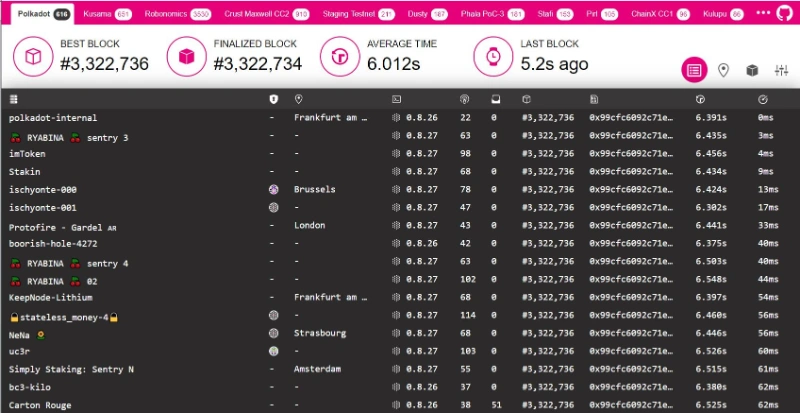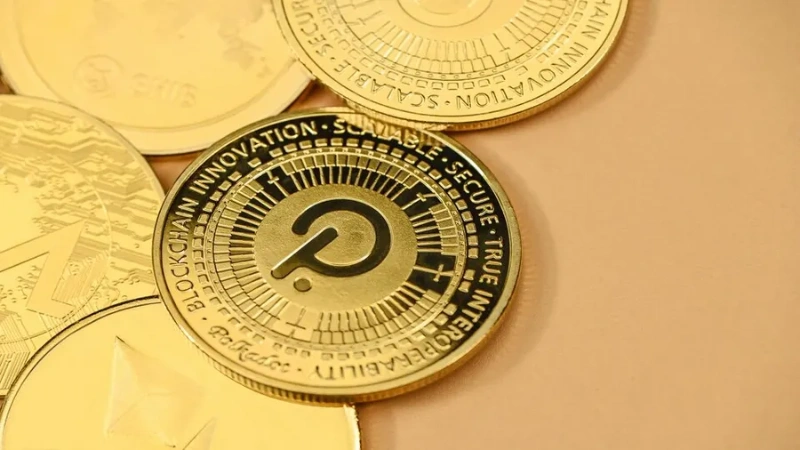No products in the cart.
Blog
Unveiling Top 10 Fascinating Facts About Polkadot DOT
Polkadot is one of the most innovative and ambitious projects in the blockchain space, aiming to create a decentralized web of interconnected blockchains. In this article, we will unveil the top 10 fascinating facts about Polkadot DOT that you may not know. Whether you are a beginner or a crypto expert, you will find something interesting and useful in this article. Let’s dive in!
Polkadot (DOT) is a multi-chain blockchain platform designed to facilitate interoperability between different blockchains. It was created by Dr. Gavin Wood, one of the co-founders of Ethereum. The Polkadot network is developed by the Web3 Foundation, which aims to build a decentralized and user-centric internet.
Polkadot Is Not A Blockchain

Polkadot, often mistaken for a conventional blockchain, is fundamentally distinct as it operates as a protocol rather than a standalone blockchain. This distinction lies in the core of its architecture, signifying a groundbreaking approach to decentralized networks.
At its core, Polkadot serves as a meticulously designed framework consisting of a set of rules and protocols, strategically engineered to facilitate seamless communication and data exchange among various blockchains within its ecosystem.
The innovative aspect of this protocol-based model is its ability to connect multiple blockchains into a cohesive network, allowing them to collaborate and share information without compromising security or autonomy. In essence, Polkadot serves as a bridge between disparate blockchain projects, fostering interoperability and synergistic growth.
Unlike traditional blockchains that operate in isolated silos, Polkadot empowers developers and communities to create specialized chains (called parachains) while benefiting from the network’s collective security and shared resources.
This unique approach not only enhances scalability and adaptability but also sets Polkadot apart as a trailblazing force in the rapidly evolving landscape of blockchain technology.
Gavin Wood, Ethereum Co-Founder, Created Polkadot
Polkadot, a groundbreaking blockchain project, traces its roots to the visionary mind of Gavin Wood, one of the co-founders of Ethereum. Gavin Wood’s journey from Ethereum to Polkadot is a significant narrative in the world of blockchain technology.
Gavin Wood’s pivotal role in the creation of Ethereum, with his contribution to the Ethereum Yellow Paper and the development of the Solidity programming language, solidified his reputation as a prominent figure in the blockchain community. However, in 2016, he made a notable departure from Ethereum to embark on a new mission: the creation of Polkadot.
Wood’s vision for Polkadot revolves around addressing the limitations he perceived in Ethereum, particularly in terms of scalability, interoperability, and governance. He believed that Polkadot could be the solution to these challenges by introducing a novel, interoperable framework.
His departure from Ethereum and subsequent dedication to Polkadot added a significant layer of credibility to the project, attracting attention and excitement from the blockchain community.
Under Wood’s leadership, Polkadot has steadily evolved, showcasing the potential to redefine how blockchains interact, ultimately contributing to a more interconnected, scalable, and adaptable blockchain ecosystem. This transition from Ethereum to Polkadot exemplifies Wood’s commitment to pushing the boundaries of blockchain technology, cementing his status as an influential pioneer in the industry.
Polkadot’s Treasury Holds 10% of Circulating DOT
One of the most intriguing aspects of Polkadot (DOT) is its dedicated “DOT Treasury,” a distinctive feature that sets it apart from many other blockchain projects. This treasury is home to an impressive stash of over 1.15 million DOT tokens, which represents roughly 10% of the total circulating supply of DOT.

The DOT Treasury plays a pivotal role in the Polkadot ecosystem, functioning as a reservoir of resources to fuel its growth and development. This innovative concept serves multiple purposes, making it a cornerstone of Polkadot’s success.
First and foremost, the DOT Treasury acts as a funding source for the ongoing development of the Polkadot network. By allocating a significant portion of its tokens to this treasury, Polkadot ensures a sustainable flow of resources to support core protocol upgrades and improvements. This financial stability fosters an environment conducive to innovation and keeps Polkadot at the forefront of blockchain technology.
Furthermore, the DOT Treasury serves as a powerful tool to incentivize and nurture the growth of the Polkadot ecosystem. It provides grants to developers, entrepreneurs, and projects that contribute to the ecosystem’s expansion. This financial support encourages a vibrant community of builders to continually enhance and expand the capabilities of the Polkadot network.
In addition to development grants, the DOT Treasury also backs various initiatives and projects that align with Polkadot’s long-term vision. This strategic allocation of resources ensures that Polkadot remains adaptable and responsive to emerging opportunities and challenges in the rapidly evolving blockchain landscape.
The presence of the DOT Treasury, with its substantial holdings of DOT tokens, underscores Polkadot’s commitment to sustainable growth, innovation, and community support. This innovative approach to resource management positions Polkadot as a dynamic and forward-thinking player in the blockchain space.
Polkadot Handles 1+ Million Transactions Per Second
One of the most remarkable features of Polkadot (DOT) is its impressive transaction processing capacity. Polkadot is engineered to handle a staggering number of transactions, boasting a capability to manage over 1 million transactions per second.
This remarkable throughput capacity places Polkadot head and shoulders above many other blockchain platforms, including Ethereum, which currently struggles with a far more limited transaction capacity of around 15 transactions per second.

The stark contrast between Polkadot and Ethereum in terms of transaction scalability underscores Polkadot’s commitment to addressing one of the most pressing challenges facing blockchain technology today. The ability to process a vast number of transactions per second is critical for the widespread adoption of blockchain in various industries and use cases.
Polkadot achieves this high throughput capacity through its unique architecture, which includes the use of multiple parallel blockchains called parachains. These parachains work in tandem, allowing Polkadot to efficiently process a multitude of transactions simultaneously. This innovative approach not only vastly improves transaction scalability but also enhances the overall performance and resilience of the network.
In a world where speed and scalability are paramount, Polkadot’s capacity to handle over 1 million transactions per second positions it as a powerful contender for a wide range of applications, from financial services to supply chain management and beyond. It opens the door to exciting possibilities and reinforces Polkadot’s status as a cutting-edge blockchain platform at the forefront of innovation.
Over 300 Active Parachains Fuel Polkadot Innovation
Polkadot’s dynamic and rapidly expanding ecosystem is characterized by its extensive network of parachains, marking the third fascinating fact about Polkadot (DOT).
Presently, there are more than 300 active parachains seamlessly connected to the Polkadot network, and the number is poised to grow substantially with hundreds more in active development. This achievement showcases Polkadot’s ability to accommodate and support a diverse array of projects and services within its ecosystem.
Parachains are specialized blockchains that operate in parallel with Polkadot’s main relay chain. They offer an efficient and scalable solution for various use cases, and Polkadot’s architecture enables them to interact and share security features seamlessly. These interconnected parachains provide an ideal environment for innovation, experimentation, and collaboration across the blockchain space.

The breadth of services offered by these parachains is astounding. From decentralized finance (DeFi) platforms facilitating financial activities, and non-fungible token (NFT) marketplaces revolutionizing digital ownership, to gaming ecosystems creating immersive experiences, Polkadot’s parachains cover a wide spectrum of applications.
This diversity not only enriches the Polkadot ecosystem but also positions it as a hub for cutting-edge projects across the blockchain landscape.
Polkadot’s Nominated Proof-of-Stake (NPoS) Consensus
Polkadot sets itself apart in the realm of blockchain technology with its distinctive consensus mechanism known as “Nominated Proof-of-Stake” (NPoS). This mechanism introduces a novel approach to maintaining the network’s security and consensus, emphasizing efficiency and scalability.
In the NPoS system, DOT token holders possess the unique privilege of nominating other users to serve as validators. Validators play a crucial role in the network by validating transactions and adding them to the blockchain.
These validators are selected based on the trust and confidence they inspire within the DOT-holding community. Users who wish to participate in the network’s governance can stake their DOT tokens and vote for validators they believe will act in the network’s best interest.
This innovative approach offers several advantages over traditional Proof-of-Work (PoW) systems. First and foremost, NPoS significantly reduces energy consumption, as it doesn’t require the resource-intensive mining process seen in PoW. Additionally, NPoS enhances scalability, as validators can be dynamically added or removed based on their performance and the trust they maintain within the network.

Polkadot’s NPoS mechanism not only ensures the network’s security but also fosters a decentralized and participatory ecosystem where token holders actively engage in shaping the network’s future. This forward-thinking consensus model exemplifies Polkadot’s commitment to pushing the boundaries of blockchain technology.
Polkadot’s 3,000+ Validators Fortify Network Security
The other fact about Polkadot (DOT) centers around its robust security infrastructure, underpinned by a formidable army of over 3,000 active validators. This vast number of validators forms a decentralized network of participants responsible for validating and securing transactions on the Polkadot blockchain.
What sets Polkadot apart is not just the sheer quantity of validators but also the continuously increasing participation of individuals and entities in the network, further enhancing its security and resilience.
The extensive network of validators plays a pivotal role in maintaining the integrity and security of Polkadot’s blockchain. Validators are responsible for validating transactions, proposing new blocks, and participating in the consensus process. The decentralized nature of these validators ensures that no single entity can exert undue control over the network, making it highly resistant to attacks and censorship.
Polkadot’s commitment to decentralization and security is further exemplified by its continuously growing validator count. As more people join the network as validators, it becomes increasingly resilient to any potential threats or vulnerabilities. This ongoing expansion of participation not only fortifies the security of the network but also underscores the widespread interest and trust in Polkadot as a leading blockchain platform.

Polkadot’s Price Performance – From $50 to Under $4
The journey of Polkadot’s price has been marked by notable ups and downs, reflecting the volatility inherent in the cryptocurrency market.
At its zenith, Polkadot reached an impressive all-time high of $50 per DOT token, signaling strong investor interest and enthusiasm for the project. However, this bullish sentiment was followed by a sharp decline that saw the price plummet to below $4, a stark contrast to its previous highs.
Several factors have contributed to this price turbulence. The persistent bear market conditions in the broader crypto space have undoubtedly played a role, dampening overall market sentiment and affecting Polkadot along with many other cryptocurrencies.
Additionally, there has been anticipation and speculation surrounding the release of previously locked DOT tokens, which can exert downward pressure on the price as investors brace for increased supply.
Despite these challenges, Polkadot has maintained a substantial circulating supply, with approximately 95% of the total DOT tokens in circulation. This availability ensures liquidity and accessibility for traders and investors while contributing to the network’s overall resilience and functionality.
The volatility in Polkadot’s price underscores the importance of careful analysis and risk management for those involved in the cryptocurrency market.
Unlocking $467 Million: Polkadot’s Impactful Token Event
The unlocking of DOT tokens worth around $467 million on October 24, 2023, is a notable event in the Polkadot ecosystem. These tokens are different from those held by private investors and are instead in the hands of retail contributors who participated in crowd loans.

The impact of this event on Polkadot’s price is substantial because it introduces the potential for a significant increase in supply, which can create downward pressure on the token’s value.
When these tokens are unlocked, some contributors may choose to sell a portion of their holdings, possibly to realize profits or manage their investments. The increase in selling activity can lead to a temporary dip in DOT’s price due to increased supply in the market.
However, the exact magnitude of this effect depends on several factors, including market sentiment and the actions of individual token holders.
Investors and observers closely monitor such token unlockings as they can influence short-term price volatility, but the long-term fundamentals and adoption of Polkadot’s technology also play a crucial role in determining its value over time.
Polkadot Is Still Under Development
While Polkadot remains a project in active development, it has achieved remarkable milestones, underscoring its potential to reshape the blockchain landscape. Despite being in its early stages, Polkadot has successfully launched its mainnet, marking a significant step forward in its evolution.
Polkadot’s mainnet launch reflects its commitment to practical implementation and innovation. Beyond this foundational achievement, the project is diligently advancing, with a robust roadmap that includes the development of exciting features and enhancements.
As it continues to grow and evolve, Polkadot’s unique architecture and vision for interoperability and scalability position it as a compelling force in the blockchain industry. Polkadot’s ongoing progress and dedication to overcoming blockchain limitations make it a project deserving of close attention as it charts a promising course toward revolutionizing the blockchain landscape.
Conclusion
In exploring these compelling facts about Polkadot DOT, we’ve delved into a realm of blockchain innovation that challenges conventions and pushes boundaries. From its visionary founder, Gavin Wood, to its unique consensus mechanism and its thriving ecosystem of parachains and validators, Polkadot’s story is one of progress and potential.
As it continues to evolve and make strides in the blockchain world, Polkadot DOT remains a captivating project that promises to redefine the future of decentralized technology.


